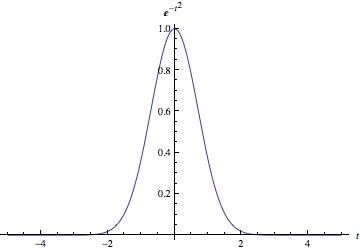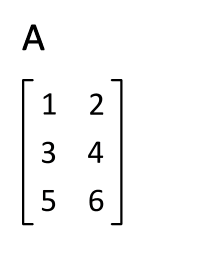|
Random Element
In probability theory, random element is a generalization of the concept of random variable to more complicated spaces than the simple real line. The concept was introduced by who commented that the “development of probability theory and expansion of area of its applications have led to necessity to pass from schemes where (random) outcomes of experiments can be described by number or a finite set of numbers, to schemes where outcomes of experiments represent, for example, vectors, functions, processes, fields, series, transformations, and also sets or collections of sets.” The modern-day usage of “random element” frequently assumes the space of values is a topological vector space, often a Banach or Hilbert space with a specified natural sigma algebra of subsets. Definition Let (\Omega, \mathcal, P) be a probability space, and (E, \mathcal) a measurable space. A random element with values in ''E'' is a function which is (\mathcal, \mathcal)-measurable. That is, a ... [...More Info...] [...Related Items...] OR: [Wikipedia] [Google] [Baidu] [Amazon] |
Probability Theory
Probability theory or probability calculus is the branch of mathematics concerned with probability. Although there are several different probability interpretations, probability theory treats the concept in a rigorous mathematical manner by expressing it through a set of axioms of probability, axioms. Typically these axioms formalise probability in terms of a probability space, which assigns a measure (mathematics), measure taking values between 0 and 1, termed the probability measure, to a set of outcomes called the sample space. Any specified subset of the sample space is called an event (probability theory), event. Central subjects in probability theory include discrete and continuous random variables, probability distributions, and stochastic processes (which provide mathematical abstractions of determinism, non-deterministic or uncertain processes or measured Quantity, quantities that may either be single occurrences or evolve over time in a random fashion). Although it is no ... [...More Info...] [...Related Items...] OR: [Wikipedia] [Google] [Baidu] [Amazon] |
Borel σ-algebra
In mathematics, a Borel set is any subset of a topological space that can be formed from its open sets (or, equivalently, from closed sets) through the operations of countable union (set theory), union, countable intersection (set theory), intersection, and relative complement. Borel sets are named after Émile Borel. For a topological space ''X'', the collection of all Borel sets on ''X'' forms a sigma-algebra, σ-algebra, known as the Borel algebra or Borel σ-algebra. The Borel algebra on ''X'' is the smallest σ-algebra containing all open sets (or, equivalently, all closed sets). Borel sets are important in measure theory, since any measure defined on the open sets of a space, or on the closed sets of a space, must also be defined on all Borel sets of that space. Any measure defined on the Borel sets is called a Borel measure. Borel sets and the associated Borel hierarchy also play a fundamental role in descriptive set theory. In some contexts, Borel sets are def ... [...More Info...] [...Related Items...] OR: [Wikipedia] [Google] [Baidu] [Amazon] |
Scalar (mathematics)
A scalar is an element of a field which is used to define a ''vector space''. In linear algebra, real numbers or generally elements of a field are called scalars and relate to vectors in an associated vector space through the operation of scalar multiplication (defined in the vector space), in which a vector can be multiplied by a scalar in the defined way to produce another vector. Generally speaking, a vector space may be defined by using any field instead of real numbers (such as complex numbers). Then scalars of that vector space will be elements of the associated field (such as complex numbers). A scalar product operation – not to be confused with scalar multiplication – may be defined on a vector space, allowing two vectors to be multiplied in the defined way to produce a scalar. A vector space equipped with a scalar product is called an inner product space. A quantity described by multiple scalars, such as having both direction and magnitude, is called a ... [...More Info...] [...Related Items...] OR: [Wikipedia] [Google] [Baidu] [Amazon] |
Row Vector
In linear algebra, a column vector with elements is an m \times 1 matrix consisting of a single column of entries, for example, \boldsymbol = \begin x_1 \\ x_2 \\ \vdots \\ x_m \end. Similarly, a row vector is a 1 \times n matrix for some , consisting of a single row of entries, \boldsymbol a = \begin a_1 & a_2 & \dots & a_n \end. (Throughout this article, boldface is used for both row and column vectors.) The transpose (indicated by ) of any row vector is a column vector, and the transpose of any column vector is a row vector: \begin x_1 \; x_2 \; \dots \; x_m \end^ = \begin x_1 \\ x_2 \\ \vdots \\ x_m \end and \begin x_1 \\ x_2 \\ \vdots \\ x_m \end^ = \begin x_1 \; x_2 \; \dots \; x_m \end. The set of all row vectors with entries in a given field (such as the real numbers) forms an -dimensional vector space; similarly, the set of all column vectors with entries forms an -dimensional vector space. The space of row vectors with entries can be regarded as the dual spac ... [...More Info...] [...Related Items...] OR: [Wikipedia] [Google] [Baidu] [Amazon] |
Transpose
In linear algebra, the transpose of a Matrix (mathematics), matrix is an operator which flips a matrix over its diagonal; that is, it switches the row and column indices of the matrix by producing another matrix, often denoted by (among other notations). The transpose of a matrix was introduced in 1858 by the British mathematician Arthur Cayley. Transpose of a matrix Definition The transpose of a matrix , denoted by , , , A^, , , or , may be constructed by any one of the following methods: #Reflection (mathematics), Reflect over its main diagonal (which runs from top-left to bottom-right) to obtain #Write the rows of as the columns of #Write the columns of as the rows of Formally, the -th row, -th column element of is the -th row, -th column element of : :\left[\mathbf^\operatorname\right]_ = \left[\mathbf\right]_. If is an matrix, then is an matrix. In the case of square matrices, may also denote the th power of the matrix . For avoiding a possibl ... [...More Info...] [...Related Items...] OR: [Wikipedia] [Google] [Baidu] [Amazon] |
Vector Space
In mathematics and physics, a vector space (also called a linear space) is a set (mathematics), set whose elements, often called vector (mathematics and physics), ''vectors'', can be added together and multiplied ("scaled") by numbers called scalar (mathematics), ''scalars''. The operations of vector addition and scalar multiplication must satisfy certain requirements, called ''vector axioms''. Real vector spaces and complex vector spaces are kinds of vector spaces based on different kinds of scalars: real numbers and complex numbers. Scalars can also be, more generally, elements of any field (mathematics), field. Vector spaces generalize Euclidean vectors, which allow modeling of Physical quantity, physical quantities (such as forces and velocity) that have not only a Magnitude (mathematics), magnitude, but also a Orientation (geometry), direction. The concept of vector spaces is fundamental for linear algebra, together with the concept of matrix (mathematics), matrices, which ... [...More Info...] [...Related Items...] OR: [Wikipedia] [Google] [Baidu] [Amazon] |
Column Vector
In linear algebra, a column vector with elements is an m \times 1 matrix consisting of a single column of entries, for example, \boldsymbol = \begin x_1 \\ x_2 \\ \vdots \\ x_m \end. Similarly, a row vector is a 1 \times n matrix for some , consisting of a single row of entries, \boldsymbol a = \begin a_1 & a_2 & \dots & a_n \end. (Throughout this article, boldface is used for both row and column vectors.) The transpose (indicated by ) of any row vector is a column vector, and the transpose of any column vector is a row vector: \begin x_1 \; x_2 \; \dots \; x_m \end^ = \begin x_1 \\ x_2 \\ \vdots \\ x_m \end and \begin x_1 \\ x_2 \\ \vdots \\ x_m \end^ = \begin x_1 \; x_2 \; \dots \; x_m \end. The set of all row vectors with entries in a given field (such as the real numbers) forms an -dimensional vector space; similarly, the set of all column vectors with entries forms an -dimensional vector space. The space of row vectors with entries can be regarded as the dual sp ... [...More Info...] [...Related Items...] OR: [Wikipedia] [Google] [Baidu] [Amazon] |

